
Nature Computational Science
Scope & Guideline
Exploring New Horizons in Computational Applications
Introduction
Aims and Scopes
- Computational Biology and Bioinformatics:
The journal emphasizes the use of computational models and algorithms to analyze biological data, including genomics, proteomics, and cellular dynamics, facilitating a deeper understanding of biological processes. - Machine Learning and Artificial Intelligence Applications:
A significant focus is on incorporating machine learning and AI techniques to enhance predictive modeling, data analysis, and decision-making processes across various scientific disciplines. - Materials Science and Engineering:
The journal explores computational approaches in materials discovery and design, including the development of new materials and understanding their properties via simulations and modeling. - Environmental and Sustainability Science:
Research related to computational methods for addressing environmental challenges, such as climate change and resource management, is a core area of interest. - Interdisciplinary Research:
The journal promotes studies that integrate different scientific fields, such as physics, chemistry, and social sciences, to tackle complex problems through computational frameworks. - Ethics and Equity in Computational Science:
There is an increasing focus on the ethical implications of computational research, particularly in areas like data privacy, AI bias, and inclusivity in scientific practices.
Trending and Emerging
- Data-Driven Approaches and Big Data Analytics:
There is a surge in research utilizing big data analytics to derive insights from large and complex datasets, enhancing the ability to make informed predictions and decisions in various scientific fields. - Digital Twins and Simulation Technologies:
The concept of digital twins—virtual replicas of physical systems—has gained traction, with increasing research on their applications in fields such as urban planning, healthcare, and engineering. - AI and Machine Learning Integration:
The integration of AI and machine learning into traditional computational methods is a key trend, with a focus on improving efficiency, accuracy, and the ability to solve previously intractable problems. - Health Informatics and Computational Medicine:
Research focused on the application of computational methods to healthcare, including predictive modeling for disease diagnosis and treatment optimization, is rapidly gaining prominence. - Ethical AI and Responsible Data Usage:
Emerging concerns regarding the ethical implications of AI and data usage are prompting research into developing frameworks for responsible and equitable practices in computational science. - Sustainability and Climate Modeling:
Research addressing sustainability challenges and climate impact through computational modeling is increasingly relevant, reflecting a broader societal focus on environmental issues.
Declining or Waning
- Traditional Statistical Methods:
There has been a noticeable decline in the reliance on traditional statistical methods in favor of more advanced computational techniques, such as machine learning and AI, which offer greater flexibility and predictive power. - Purely Theoretical Studies:
The journal has seen fewer purely theoretical papers that do not incorporate practical applications or computational tools, as there is a growing demand for research that translates theory into practice. - Single-Domain Focus:
Research that focuses solely on a single scientific domain without interdisciplinary collaboration is becoming less frequent, as the complexity of modern scientific problems often necessitates multi-domain approaches.
Similar Journals
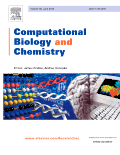
COMPUTATIONAL BIOLOGY AND CHEMISTRY
Illuminating the Path of Innovation in Biochemistry through Computational InsightsCOMPUTATIONAL BIOLOGY AND CHEMISTRY is a distinguished academic journal published by Elsevier Science Ltd, focusing on the dynamic intersection of computational biology, biochemistry, and chemistry. With an ISSN of 1476-9271 and an E-ISSN of 1476-928X, this journal is committed to disseminating high-quality research that employs computational techniques to solve complex biological and chemical problems. As of 2023, the journal holds a substantial impact factor reflecting its significance and rigorous peer-review process, categorized in the Q2 quartile for both Computational Mathematics and Organic Chemistry, alongside Q3 classifications in Biochemistry and Structural Biology. With a continuous publication history spanning from 2003 to 2024, it serves as a critical resource for researchers, professionals, and students alike. The journal offers various open access options, ensuring that vital research findings are accessible to a global audience, further enhancing collaboration across disciplines. Engage with cutting-edge studies and contribute to the evolving landscape of computational methodologies in the life sciences through this esteemed publication.
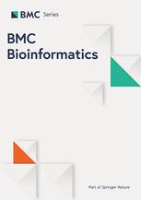
BMC BIOINFORMATICS
Pioneering Research at the Intersection of Biology and Computer Science.BMC Bioinformatics is a leading open-access journal published by BMC, dedicated to the rapidly evolving field of bioinformatics. With its inception in 2000, the journal has established itself as an essential resource for researchers, professionals, and students alike, disseminating high-quality research that bridges the gap between biology and computational science. BMC Bioinformatics holds a reputable Q1 ranking in Applied Mathematics and Computer Science Applications, and a Q2 ranking in both Biochemistry and Structural Biology, reflecting its significant impact in these interdisciplinary fields. The journal's broad scope encompasses innovative methodologies, tools, and applications that drive progress in biological research through computational approaches. With open access since its inception, the journal ensures unrestricted availability of cutting-edge research findings, promoting knowledge sharing and collaboration in the global scientific community. As it continues to publish advancements up to 2024, BMC Bioinformatics remains a cornerstone for those seeking to enhance their understanding of bioinformatics and its vital role in modern science.

Frontiers in Computational Neuroscience
Innovating the Future of Neuroscience with Computational Precision.Frontiers in Computational Neuroscience, published by FRONTIERS MEDIA SA, is a leading journal within the fields of neuroscience and computational biology, dedicated to advancing the understanding of the brain's complex functions through innovative computational methodologies. Since its establishment in 2007, this Open Access journal has provided a platform for researchers around the globe to share their groundbreaking findings, as evidenced by its continual presence in the academic conversation and a strong ranking within Scopus metrics (Rank #12/49 in Neuroscience - Neuroscience (miscellaneous) and Rank #63/97 in Cellular and Molecular Neuroscience). With an esteemed impact factor reflective of its quality and influence, and a commitment to providing freely accessible research, this journal plays a crucial role in fostering collaboration and knowledge dissemination among professionals, researchers, and students alike. Located in the scientific hub of Switzerland, it invites submissions from diverse perspectives, aiming to bridge the gap between computational models and biological insights through rigorous peer-reviewed publications.
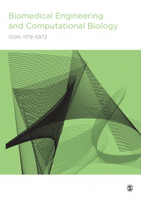
Biomedical Engineering and Computational Biology
Unlocking Potential in Healthcare Through Computational InsightsBiomedical Engineering and Computational Biology is a premier journal dedicated to advancing the fields of biomedical engineering and computational biology through rigorous research and innovation. Published by SAGE Publications Ltd, this Open Access journal has been providing a platform for the dissemination of high-quality research since 2009, enabling wider accessibility and collaboration among scientists and practitioners around the globe. With its comprehensive scope that encompasses the intersection of engineering principles and biological systems, the journal plays a critical role in fostering advancements in healthcare technologies and computational methods. Researchers, professionals, and students alike can take advantage of its rich repository of articles that contribute significantly to the understanding and application of complex biological data through computational techniques. The journal’s commitment to excellence is reflected in its high visibility within the scientific community, making it an essential resource for those looking to stay at the forefront of this dynamic field.

Multiscale and Multidisciplinary Modeling Experiments and Design
Pioneering multidisciplinary approaches in applied mathematics and materials science.Multiscale and Multidisciplinary Modeling Experiments and Design is a dynamic journal published by SPRINGERNATURE, dedicated to advancing the fields of applied mathematics, materials science, and mechanics of materials. With an ISSN of 2520-8160 and an E-ISSN of 2520-8179, this journal provides a platform for innovative research and multidisciplinary approaches that address complex modeling and experimental challenges from 2018 to 2024. Ranked in the Q3 quartile across its categories and holding respectable positions within Scopus rankings, it serves as a vital resource for researchers and professionals seeking to explore emerging techniques and solutions in their fields. Despite its recent inception, Multiscale and Multidisciplinary Modeling Experiments and Design fosters a collaborative environment for knowledge exchange, making it essential for anyone at the forefront of scientific discovery. Open access availability ensures that the groundbreaking research published within is accessible to a broad audience, promoting global collaboration and innovations.
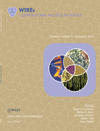
Wiley Interdisciplinary Reviews-Computational Molecular Science
Advancing Molecular Insights through Computational InnovationWiley Interdisciplinary Reviews: Computational Molecular Science is a premier journal published by WILEY, dedicated to the intersection of computational techniques and molecular science. Boasting an impressive impact factor and consistently ranking in the Q1 category across several key disciplines including Biochemistry, Computational Mathematics, Computer Science Applications, Materials Chemistry, and Physical and Theoretical Chemistry, this journal plays a crucial role in disseminating high-quality research that bridges multiple fields. With its focus on providing a platform for interdisciplinary dialogue and innovative computational solutions, it serves as an essential resource for researchers, professionals, and students eager to push the boundaries of molecular science. While the journal does not currently offer open access, it remains a vital conduit for scholarly communication, fostering advancements in understanding molecular interactions through computational methods. The journal is based in the United States, contributing to its global outreach and impact in the scientific community.

Integrating Materials and Manufacturing Innovation
Fostering Collaboration for Tomorrow's Manufacturing Solutions.Integrating Materials and Manufacturing Innovation, published by SPRINGER HEIDELBERG, is a leading journal in the fields of Industrial and Manufacturing Engineering and Materials Science. Since its inception in 2012, this journal has established itself as a pivotal platform for disseminating cutting-edge research that bridges the gap between materials science and advanced manufacturing practices. With an impressive impact factor and consistent ranking within the Q1 and Q2 quartiles, it serves as an essential resource for academics and professionals alike, fostering innovation and collaboration in the industry. The journal aims to publish high-quality original research, reviews, and case studies that address contemporary challenges and advancements in materials and manufacturing integration. Researchers, students, and industry experts seeking to stay at the forefront of their fields will find this journal an invaluable addition to their academic and professional libraries.

COMPUTATIONAL GEOSCIENCES
Pioneering Research at the Crossroads of Earth and TechnologyCOMPUTATIONAL GEOSCIENCES, published by SPRINGER, is a distinguished journal in the fields of Computational Mathematics, Computational Theory and Mathematics, and Computer Science Applications. With a focus on the intersection of computational methodologies and geosciences, this journal serves as a vital platform for researchers, professionals, and students seeking to advance the understanding and application of computational techniques in earth sciences. The journal has consistently maintained a strong standing, evident from its impressive Q2 quartile ranking in 2023 across various categories, and significant Scopus rankings in Computational Mathematics and Earth and Planetary Sciences. The global impact of this journal is underscored not only by its rigorous peer-review process but also by its commitment to disseminating high-quality research that bridges theoretical advances and practical applications within the earth sciences domain. Scientifically rich and culturally diverse, COMPUTATIONAL GEOSCIENCES aims to foster collaboration and innovation while addressing pressing challenges posed by our changing planet, making it an essential resource for the academic community.
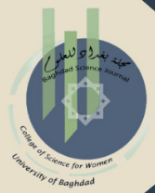
Baghdad Science Journal
Your Gateway to Cutting-Edge Scientific ResearchThe Baghdad Science Journal (ISSN: 2078-8665, E-ISSN: 2411-7986), published by the COLL SCIENCE WOMEN, UNIVERSITY OF BAGHDAD, is a pivotal peer-reviewed open-access journal dedicated to a diverse array of scientific disciplines. Since its inception in 2004, it has established itself as a leading platform for disseminating innovative research in areas including Agricultural and Biological Sciences, Biochemistry, Genetics and Molecular Biology, Chemistry, Computer Science, Mathematics, and Physics. The journal has consistently achieved commendable rankings in the Scopus database, reflecting its commitment to quality and relevance in academic research. With a Q2 classification in Agricultural and Biological Sciences and Q3 classifications in several other categories as of 2023, the journal has become an invaluable resource for researchers, professionals, and students eager to contribute to scientific advancement. Based in Iraq, the Baghdad Science Journal serves as a bridge for global scientific communication, encouraging collaboration and providing access to groundbreaking discoveries.
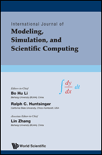
International Journal of Modeling Simulation and Scientific Computing
Pioneering the Future of Scientific ComputingThe International Journal of Modeling Simulation and Scientific Computing, published by WORLD SCIENTIFIC PUBL CO PTE LTD, is a pivotal resource in the realms of Computer Science Applications and Modeling and Simulation. With an ISSN of 1793-9623 and an E-ISSN of 1793-9615, this journal serves as a platform for innovative and high-quality research from 2010 to 2024, contributing to the advancement of methodologies and applications in various scientific fields. Although currently categorized in the Q4 quartile for both recognized domains and positioned in the 42nd and 36th percentiles in the Scopus rankings for Mathematics and Computer Science respectively, the journal encourages scholarly exchange and fosters the integration of modeling and computational analysis in scientific research. Researchers, professionals, and students alike will find this journal an essential tool to stay updated with trends, methodologies, and cutting-edge findings in simulation and computational techniques that drive scientific inquiry today.